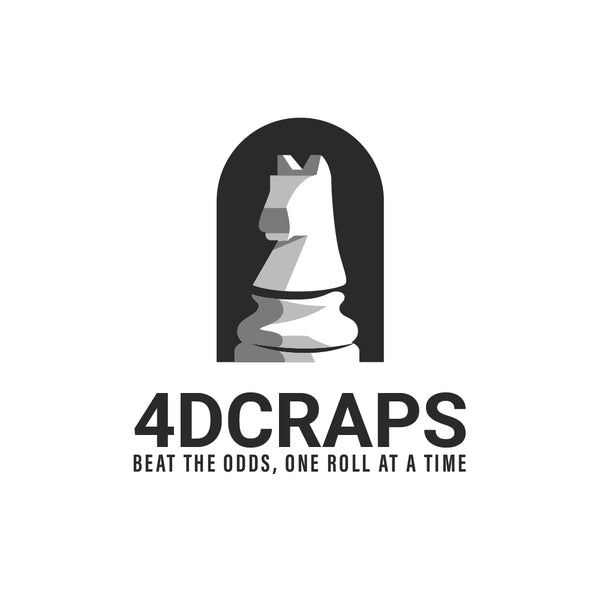🎲 Unbeatable Crap Strategy! Buying the 4 and 10?
Share
Let's go over this clearly and precisely:
- What a Buy Bet is
- Why simultaneously buying the 4 and 10 gives no advantage
- How this bet is essentially a "coin flip" with a built-in house edge
- Why progression and regression strategies don’t change your odds
🎯 1. What Is a Buy Bet in Craps?
A Buy Bet on 4 or 10 is a bet that that number will be rolled before a 7.
- The advantage over a Place Bet: Buy Bets pay true odds (2:1 on 4 or 10).
- The catch: You pay a 5% commission (called the vig), typically on your bet amount or your winnings.
Example:
- You buy the 4 for $25.
- If 4 rolls, you win $50 (2:1 payout), but the casino charges you a $1.25 vig.
- So your net win is $48.75.
- If 7 rolls, you lose your full $25.
The odds of winning vs. losing are key to understanding why this is still a losing bet in the long run.
🎲 2. Buying the 4 and 10 at the Same Time: A Closer Look
Let’s look at the numbers.
🎯 Dice Odds:
- 4: 3 ways to roll (1-3, 2-2, 3-1)
- 10: 3 ways to roll (4-6, 5-5, 6-4)
- 7: 6 ways to roll (most common number)
So, in total:
- You win on 4 or 10: 6/36 = 1/6
- You lose on 7: 6/36 = 1/6
- All other outcomes are neutral (no win/loss)
So you're essentially betting on:
“Will a 4 or 10 hit before a 7?”
That’s exactly a 50/50 coin flip in terms of probability...
BUT — the payout is not fair.
💰 3. Why There’s No Advantage — The House Edge
Even though it's a coin flip in frequency, the casino still wins in the long run because of the vig.
Example (Simple Version):
- Bet $25 on 4 and $25 on 10 = $50 total risk
- If 4 or 10 hits, you win $50 (2:1) — but pay $2.50 vig → $47.50 net
- If 7 hits, you lose $50
So the outcomes are:
| Event | Frequency (per 36 rolls) | Net Result |
|---|---|---|
| 4 or 10 | 6 | +$47.50 |
| 7 | 6 | –$50 |
| Other | 24 | 0 (bets stay) |
Your expected value per cycle is slightly negative. The house edge comes from the commission. Over time, the casino wins.
🧠 KEY POINT:
The payout ratio is not enough to cover your losses on 7. Even though the chance of winning and losing is roughly equal, the loss is bigger than the win once the vig is included.
That's how the casino profits — a slightly unfair coin flip.
📉 4. Why Progression and Regression Don’t Help
➕ Progression: Increasing bets after wins
➖ Regression: Decreasing bets after wins (or increasing after losses)
These are emotional or psychological tools, not mathematical strategies.
Why They Don’t Work:
- Every roll of the dice is independent — previous outcomes have no effect on the next.
- Whether you raise or lower your bets doesn't change the underlying house edge.
- You're just changing the size of your exposure, not the math of the game.
If you keep increasing your bets in a losing streak (Martingale style), you may run out of bankroll before you win.
If you regress after wins, you protect profit but don’t change the fact that every bet you make still has a negative expected value.
📌 Summary
| Concept | Reality |
|---|---|
| Buy Bet on 4 & 10 | Pays 2:1, but commission reduces value |
| Win vs. Loss Frequency | Equal (6/36 vs. 6/36) — looks like a coin flip |
| Actual Profitability | House wins due to commission on wins |
| Progression/Regression | Emotional tools — don’t change house edge |
✅ Bottom Line:
Buying both the 4 and 10 is a coin flip with a hidden cost (vig), and over time, you’ll lose. Betting strategies like progression or regression don't change the math — they just alter how fast or slow you lose money.
Learn about the only strategy designed to beat the house edge at 4dcraps.com.
